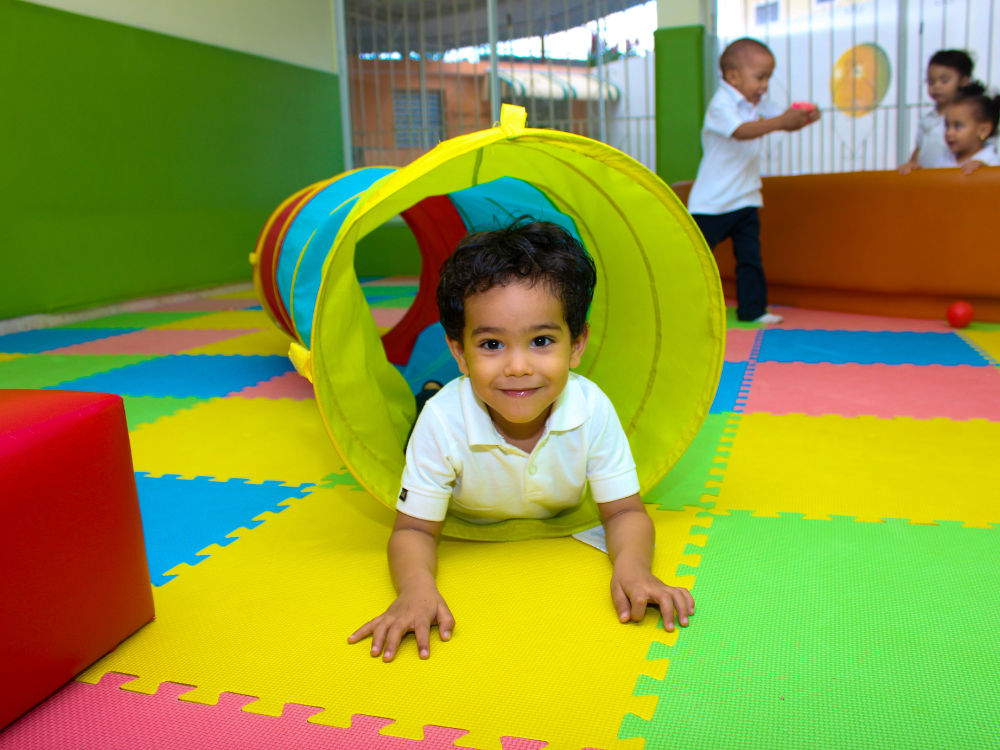The Rise of Game-Based Learning: How Games Are Changing Classrooms
What Is Game-Based Learning—and Why Does It Work?
Game-based learning (GBL) is a teaching method that uses game elements—such as levels, challenges, and rewards—to teach students new skills or reinforce knowledge. It’s designed to transform passive learning into an active, hands-on experience. Unlike traditional lessons that can feel one-size-fits-all, games are dynamic, interactive, and adaptable to different learning styles.
Why does this approach work so well? It taps into how the brain is wired to learn:
- Motivation: Games trigger dopamine, the brain’s “reward chemical,” when players achieve something, like solving a puzzle or completing a level. In education, this reward system keeps students motivated to tackle challenges, even when the material gets tough.
- Engagement: Games are immersive. They pull students into a narrative, make learning feel like an adventure, and give context to what they’re learning. For example, instead of memorizing historical dates, students might experience history firsthand by role-playing as world leaders in a simulation game.
- Repetition Without Frustration: Games allow students to fail safely. When they make mistakes, they can try again—building persistence and mastery through repetition without the fear of being judged.
Ask yourself this: Would you rather listen to a lecture about ancient civilizations or lead your own empire to greatness in a game? For many students, the choice is clear.
The Real Benefits of Game-Based Learning
Game-based learning isn’t just a fun trend; it’s backed by science and real-world results. Here’s how it’s making an impact:
1. Improved Retention
Students often forget information presented through lectures or readings. But when learning becomes an interactive experience, retention skyrockets. Why? Because students are actively participating rather than passively consuming.
For instance, a student playing a game about ecosystems might remember how food chains work because they had to design their own virtual environment where animals and plants thrived. This hands-on experience helps lock concepts into long-term memory.
2. 21st-Century Skill Development
Beyond academics, game-based learning teaches skills that students need to succeed in today’s world:
- Critical thinking: Games challenge students to solve problems, analyze scenarios, and think strategically.
- Collaboration: Multiplayer games foster teamwork, communication, and the ability to work toward a common goal.
- Digital literacy: In an increasingly tech-driven society, using game platforms helps students become comfortable with technology in meaningful ways.
For example, students using a tool like Minecraft: Education Edition can collaborate on building a virtual society, practicing teamwork, resource management, and even basic coding—all while learning subjects like geography and math.
3. Increased Equity in Learning
Not all students learn the same way. Some excel in traditional classroom settings, while others thrive with hands-on or visual approaches. Game-based learning levels the playing field by offering multiple ways to access and engage with material.
This adaptability is especially powerful for students with different learning needs, such as those with ADHD, dyslexia, or autism. Educational games are often designed to provide instant feedback, adjust difficulty levels, and create a stress-free environment for exploration.
How Gamification Is Transforming the Classroom
In classrooms across the world, game-based learning is redefining what education can look like. Here are some real-life examples of how gamification is being used to inspire students:
- Math Mastery Through Prodigy: Prodigy Math transforms math practice into a fantasy role-playing game. Students solve math problems to progress through a storyline, earn in-game rewards, and compete against friends. Teachers can customize the game to match their curriculum, ensuring it aligns with learning goals.
- Immersive History with Civilization: In the strategy game Civilization, students take on the role of historical leaders, building and managing empires while learning about world history, geography, and diplomacy. Instead of memorizing facts, they explore cause-and-effect relationships that shaped history.
- Kahoot! for Classroom Quizzes: This quiz-based platform turns assessments into fast-paced, competitive games where students earn points for correct answers. It’s a simple but highly effective way to review material while keeping students engaged.
These tools don’t just “spice up” lessons; they fundamentally change the way students interact with the material, shifting their role from passive learners to active participants.
Are There Challenges to Game-Based Learning?
While the benefits are undeniable, game-based learning does come with challenges. Teachers must ensure that the games they choose align with their curriculum, offer meaningful educational value, and don’t become a distraction.
There’s also the question of accessibility. Not all schools have the budget for advanced technology, and not every student has equal access to devices at home.
That said, educators are finding creative ways to make gamification work, even with limited resources. For example, low-tech games like card games or scavenger hunts can still incorporate gamified principles to enhance learning.
The key to success lies in balance: Using games as a tool to enhance learning rather than replacing traditional methods altogether.
What Does the Future of Game-Based Learning Look Like?
As technology continues to advance, the potential for game-based learning is limitless. Imagine:
- Virtual Reality (VR): Students could explore ancient Egypt, walk on the surface of Mars, or dive into the human body through VR experiences.
- Artificial Intelligence (AI): Games powered by AI could personalize learning even further, adapting in real-time to a student’s progress and providing individualized feedback.
- Augmented Reality (AR): AR could bring lessons to life by overlaying interactive elements on the real world—imagine a history lesson where students scan a classroom map and see battles play out in front of them.
These innovations promise to make education even more engaging, personalized, and effective.
Why Game-Based Learning Matters
At its core, game-based learning is about more than just making education fun—it’s about rethinking how we teach and learn. In a world where students are growing up surrounded by technology, traditional methods of instruction can feel outdated. Gamification bridges the gap by meeting students where they are and using tools they already enjoy to foster deeper learning.
For parents, teachers, and administrators, the question isn’t whether game-based learning works—it’s how can we use it more effectively?
By embracing this trend thoughtfully and strategically, we can create classrooms that prepare students not just for tests, but for the real world. And if that preparation feels like an adventure instead of a chore? That’s a game worth playing.
Final Thoughts
Game-based learning isn’t just a passing trend—it’s a proven approach that transforms classrooms and helps students thrive. Whether it’s building math skills, exploring history, or developing teamwork, gamification is opening new doors in education.
If we want to prepare today’s students for tomorrow’s challenges, it’s time to move beyond traditional teaching methods and embrace the power of play. After all, learning doesn’t have to be boring—it can be an adventure.





Comments are closed